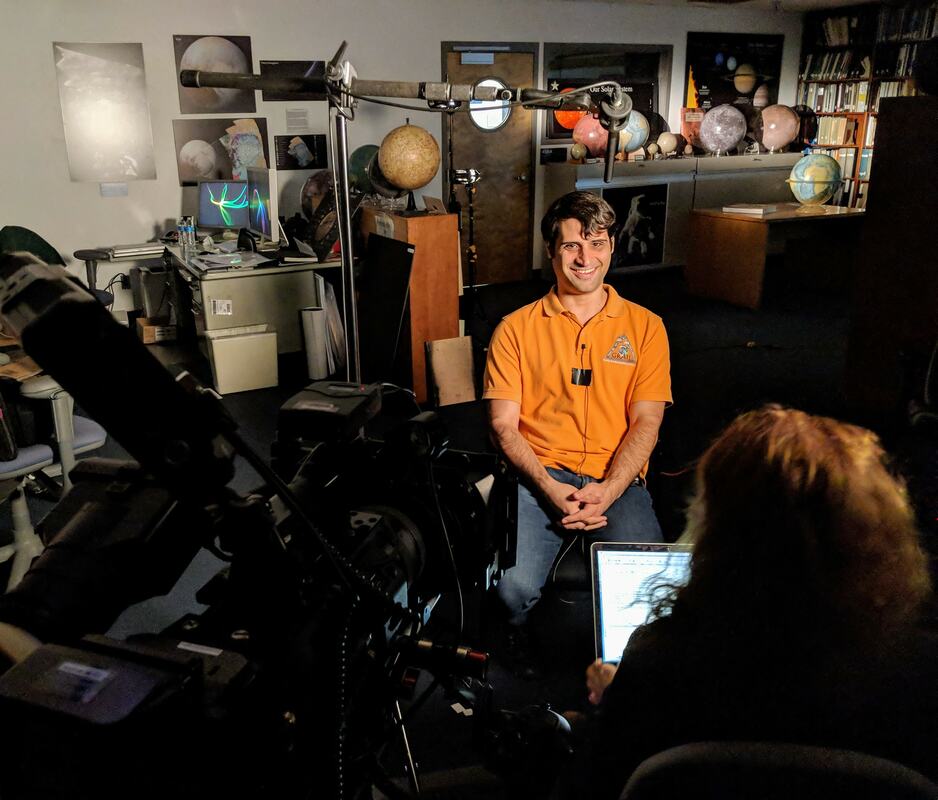| The planets, moons, and asteroids in our solar system offer a host of mysteries that if (when!) solved will enlighten us about processes occurring on Earth and throughout the universe. As a planetary scientist, I study the geology and physics of the solid worlds orbiting the Sun in an effort to explore Earth’s neighborhood and shed light on how planets evolve. NASA robotic spacecraft provide the data I use in my research. During my Ph.D. at MIT and postdoctoral work at the University of Arizona, I’ve been involved with four of these NASA missions: the Lunar Reconnaissance Orbiter and GRAIL missions studying the Moon, the Mars Reconnaissance Orbiter studying Mars, and the Dawn mission that orbited Ceres, the largest object in the asteroid belt. These missions used a variety of scientific instruments to study the surfaces and interiors of these worlds, including cameras, spectrometers, and tools to precisely measure gravity. One of these instruments that has special importance to the University of Arizona is the HiRISE camera, an imager that is the most powerful of its kind ever sent to another planet and operated from our own campus. I enjoy keeping a diverse set of scientific interests – there are far too many fascinating worlds in our solar system to pick just one! – but my research all falls under the theme of “planetary geophysics.” I’ve studied ice volcanoes on Ceres, regular volcanoes on the Moon, glaciers on Mars, the interior of Mercury, and mysterious bright patches on the distant moons of Uranus. Planetary science is a data-rich field with guarantees of major discovery that come with each successful NASA mission, and I can’t wait to see where our journey of exploration takes us next. |
|
0 Comments
|
SpotlightEach month we'll feature a Postdoctoral Scholar and their research, sharing their experiences from the UA, life in Arizona and their research interests. Archives
November 2022
Categories |

 RSS Feed
RSS Feed
